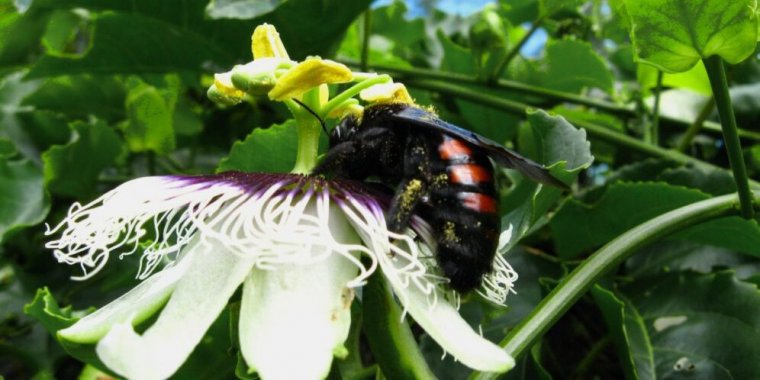| News / Science News |
Bee loss puts global South food crops at risk
The worldwide loss of bees and other pollinators is driven primarily by changes in land use, land management and pesticide application, especially in the global South, according to a global assessment.

Brazil is facing a shortage of bumblebees, responsible for the pollination of one of its main fruit trees, the passion fruit. Changes in land use, land management, and pesticide use are the main drivers of global pollinator loss. Photo: Andrei/Flickr
The findings could be key to adapting global policies for reversing the decline of pollinators such as bees, hummingbirds, butterflies, flies and even bats.
These are essential for the reproductive success of more than 75 per cent of crops and flowers globally, playing an important role in nutrition and the economy.
Tom Breeze, co-author of the research, told: “One of the biggest challenges in international pollinator conservation is knowing what we should be doing and where, and how it could affect people.
“This study gives us a first indication of what the biggest pressures on pollinators are in different parts of the world and, more crucially, how at risk the different benefits we get from pollinators are.”
The study was conducted by an international team of 20 pollination experts selected to cover a wide range of perspectives, including biodiversity, economics, social sciences and indigenous and local knowledge.
Through literature searches and analysis, and group discussion, they evaluated the relative regional and global importance of eight drivers of pollinator decline: pollinator management, pests and pathogens, use of pesticides, land management, land cover and configuration, invasive alien species, genetically modified organisms (GMOs), and climate change.
They also set out 10 consequent risks to human well-being, grouped according to their impact on food or “biocultural” diversity, meaning the variety of people–nature interlinkages that have developed over time in specific ecosystems.
The decrease in quantity and quality of food crops and biofuels was considered one of the biggest risks to humans in all regions.
Experts rated the risk of crop yield “instability” as serious or high risk in two thirds of the world, from Africa to Latin America, where many are directly dependent on the pollination of small-scale farming crops.
While land management was evaluated by the team as “less important” in Africa, pesticides were scored as “important” or “very important” drivers of pollinator decline in all regions, especially in Asia Pacific and Latin America.
Climate change effects were considered “unknown” because of long-term data scarcity, while GMOs were deemed the least important driver overall, except in Latin America.
In the last decade, pollinator-dependent crops increased in volume by more than 300 per cent, but their yield growth has been less than that of crops that rely mainly on wind to pollinate, according to a previous study from 2016.
Although several factors may play a role, studies show that production declines when pollinators decline.
The pollinator decline leaves its mark all over the world with varying capacity to cope with it in different regions.
Latif Iddrisu Nasare, from the faculty of natural resources and environment of the University for Development Studies in Ghana, says the biggest impact of pollinator decline in this West African country is being seen in commercial crops, particularly cocoa and shea. (SciDev.Net)





